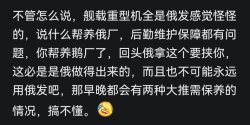Unfortunately, Yankee and Shilao seems to suggest that the J-15 family may never get WS-10s in one of their latest podcasts.
【歼15为什么一直用俄发?】
To sum it up:
- Mainly for logistical consistency and ease of maintenance (as dealing with 3 different engines on a single carrier will become pretty challenging).
- The new/upgraded variant of the AL-31F has increased thrusts, and its performance is sufficient for the J-15 family's needs.
- There are no technological, performance and production capacity issues that can be related to the decision to not employ WS-10s on the J-15 family.
- The current production J-15 family is definitely not using "in-storage AL-31Fs" (given how there are only about 30+ Su-33, but there are already more than 100 units of the J-15 family today) - Meaning that the new-built J-15Ts/DTs are definitely using new-built AL-31Fs.
- PLANAF pilots have always been using AL-31Fs till now, hence there may no longer the need to swap the J-15 family's engines for WS-10s (mainly because the pilots are already used to operating AL-31Fs).
- In the next 10-20 years, the AL-31F will continue become a very important/part of Chinese carrier's flight decks (namely, the J-15 family will keep using them).
- As a means of maintaining "military diplomacy goodwill" between China and Russia (this may also relate to the Sino-Flanker agreements between China and Russia).
If this is true, then I suppose the WS-10H2 may only see first usages on future carrier-based UCAVs (and maybe even the LRIP J-XD(S)Hs in case the WS-15H is not ready).
I unironically like this prospect because it will force some people to be more humble and temper their enthusiasm a bit.
Learning that PLA watching is not something to enjoy, but something to endure through, is an important lesson.

